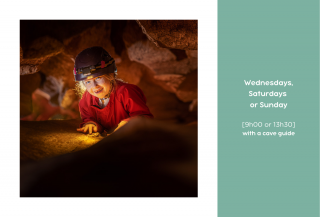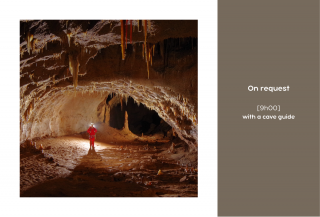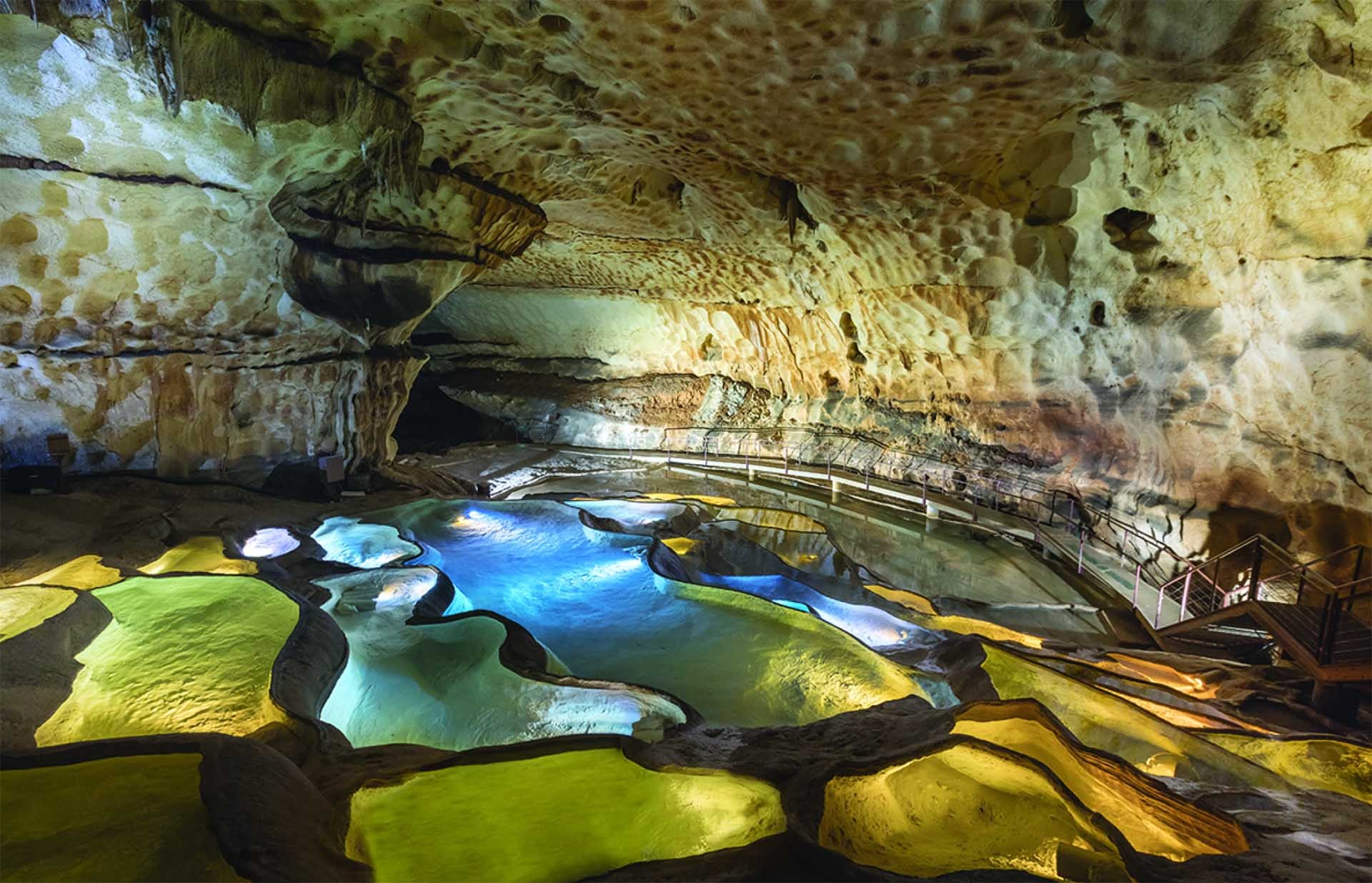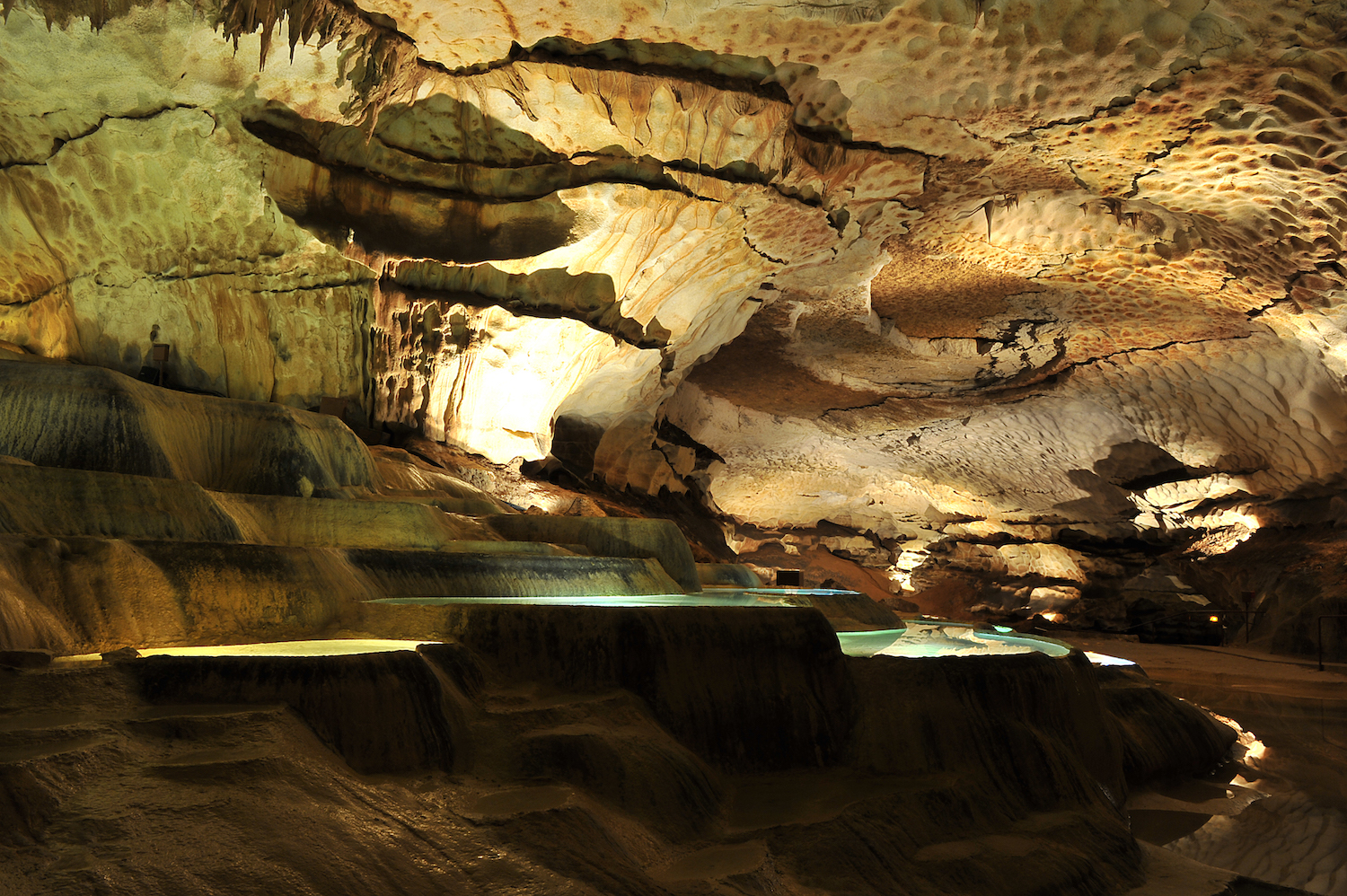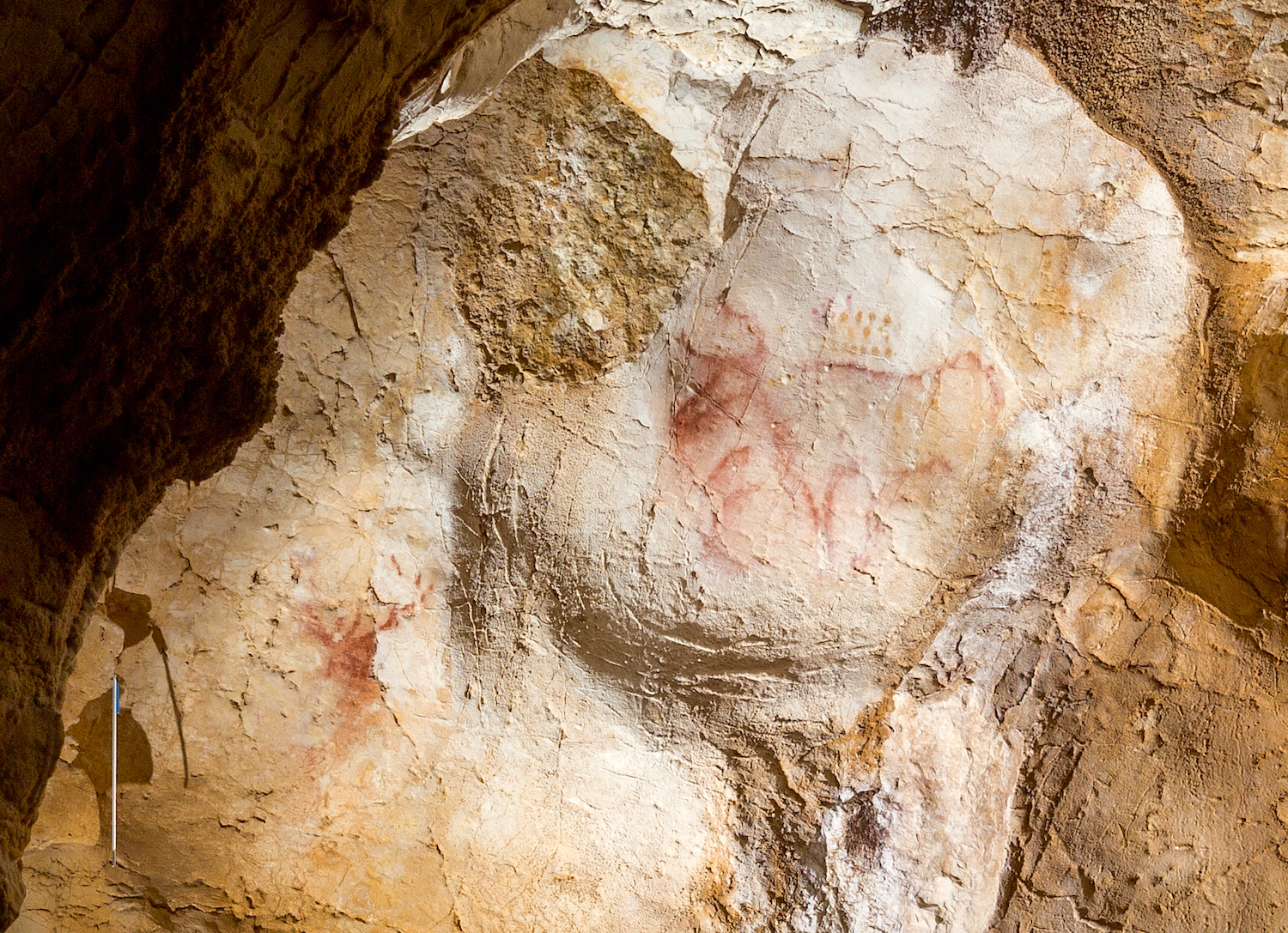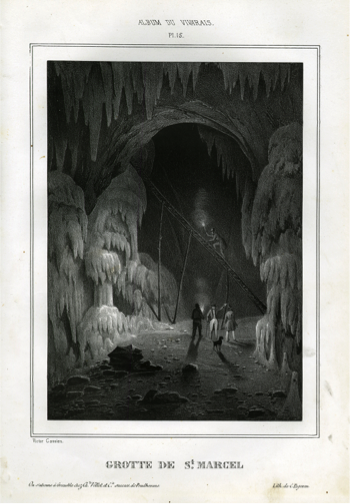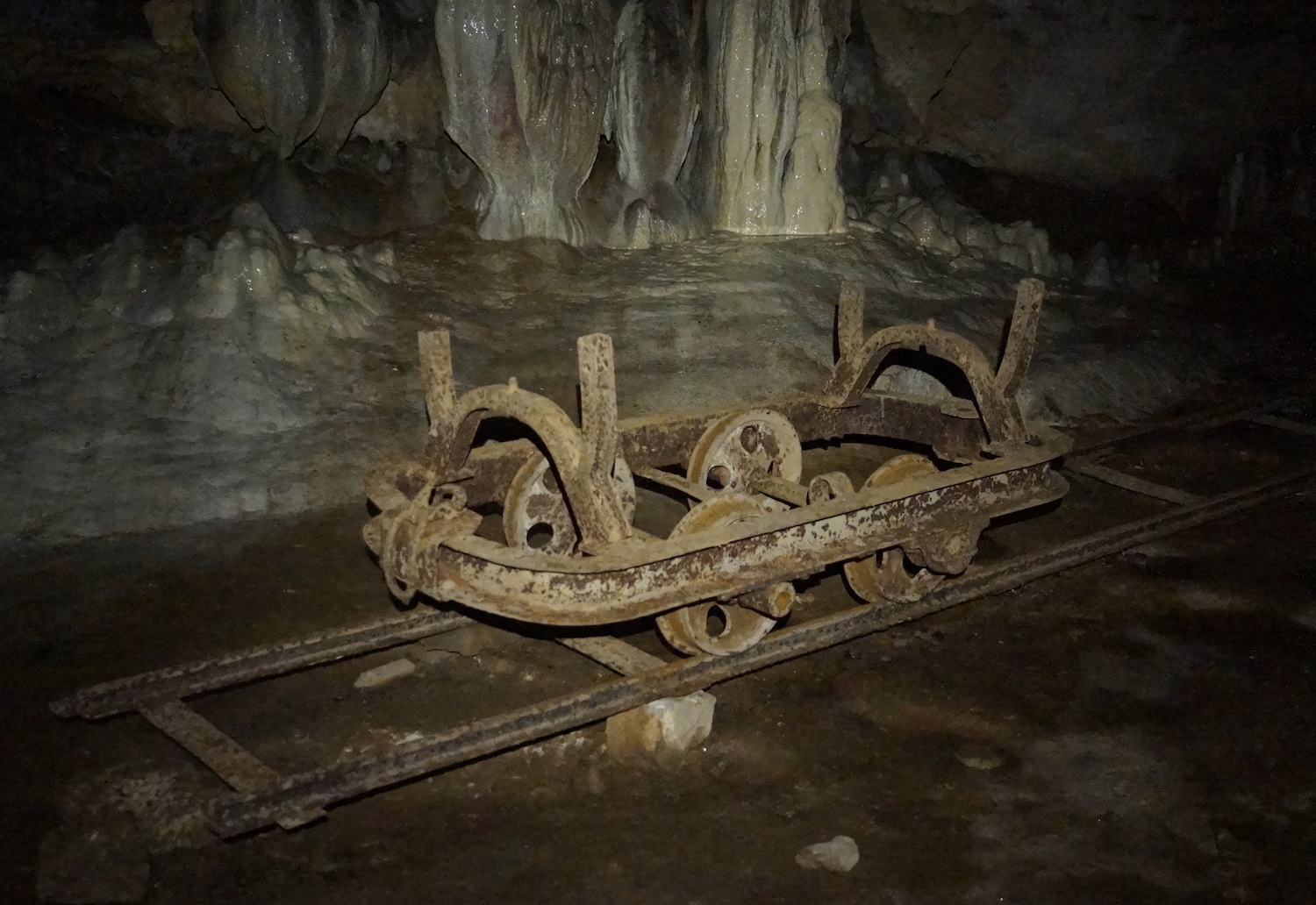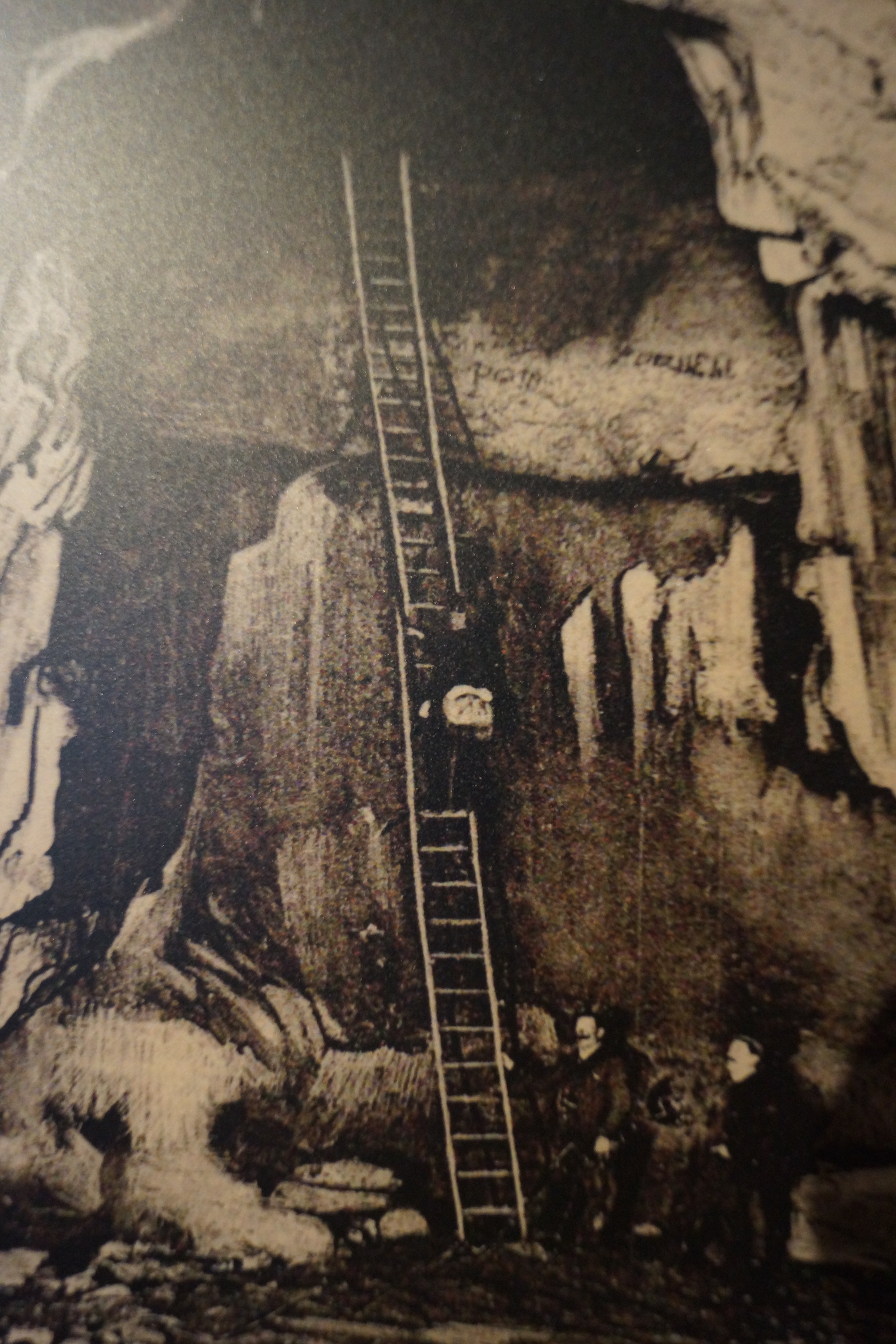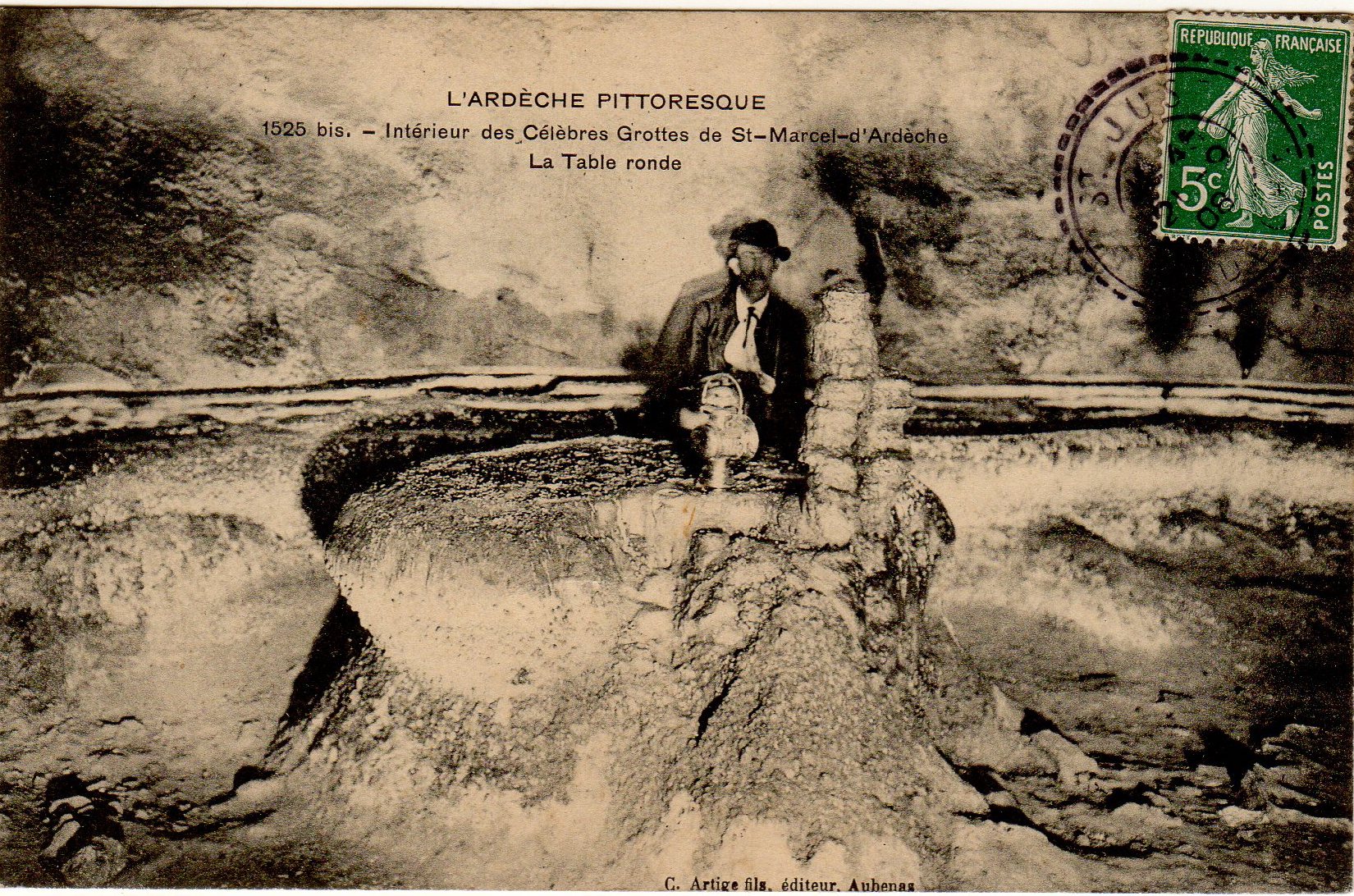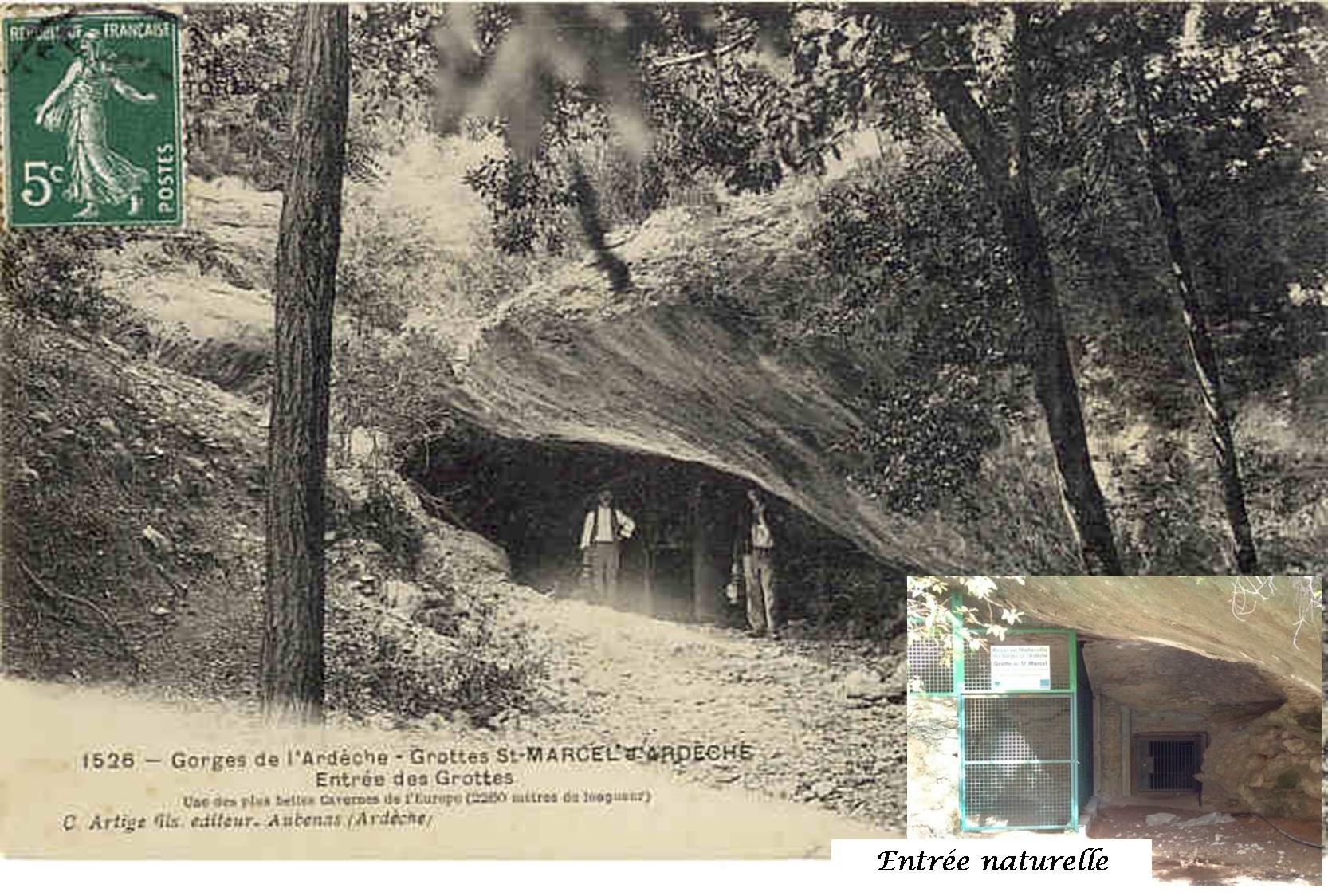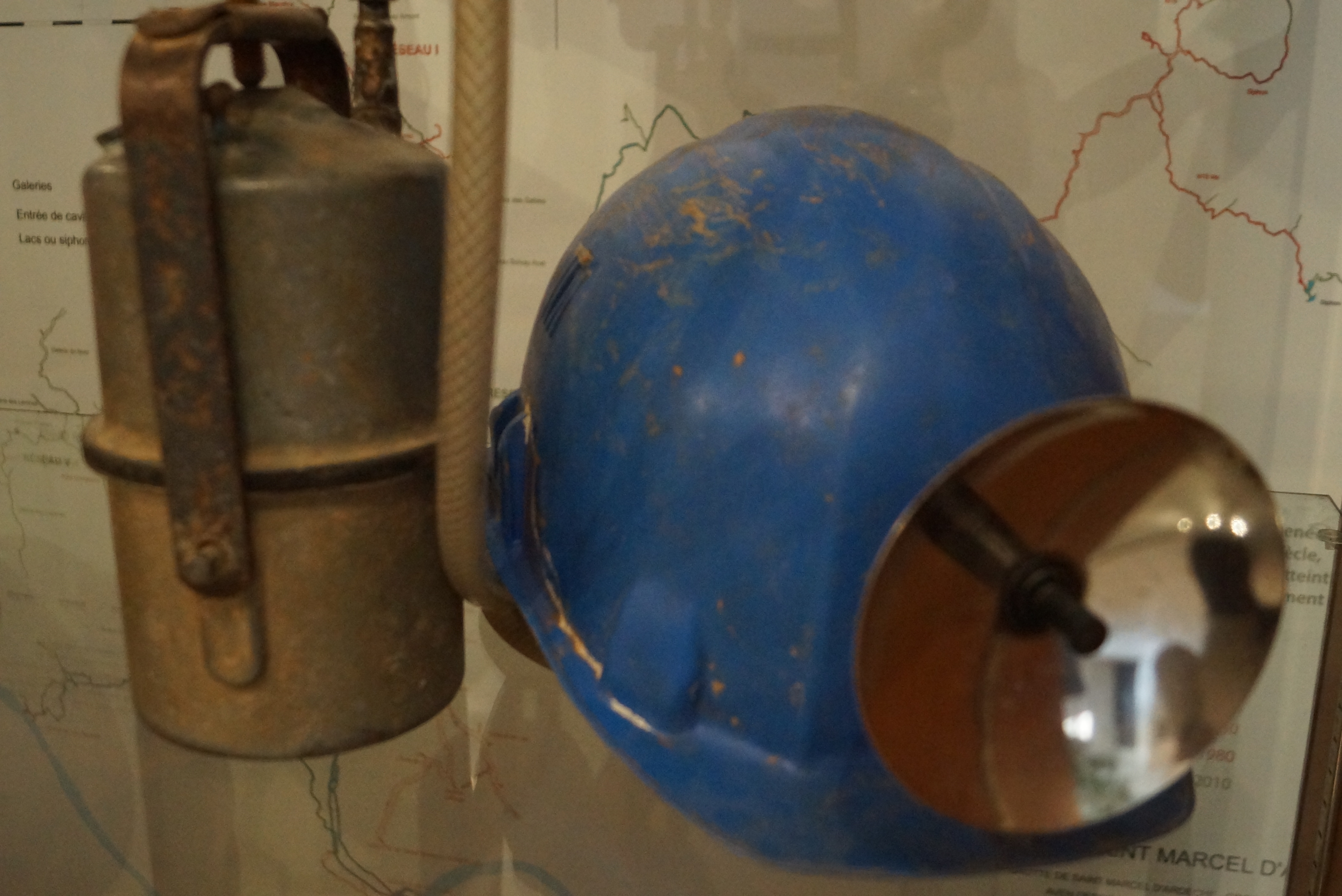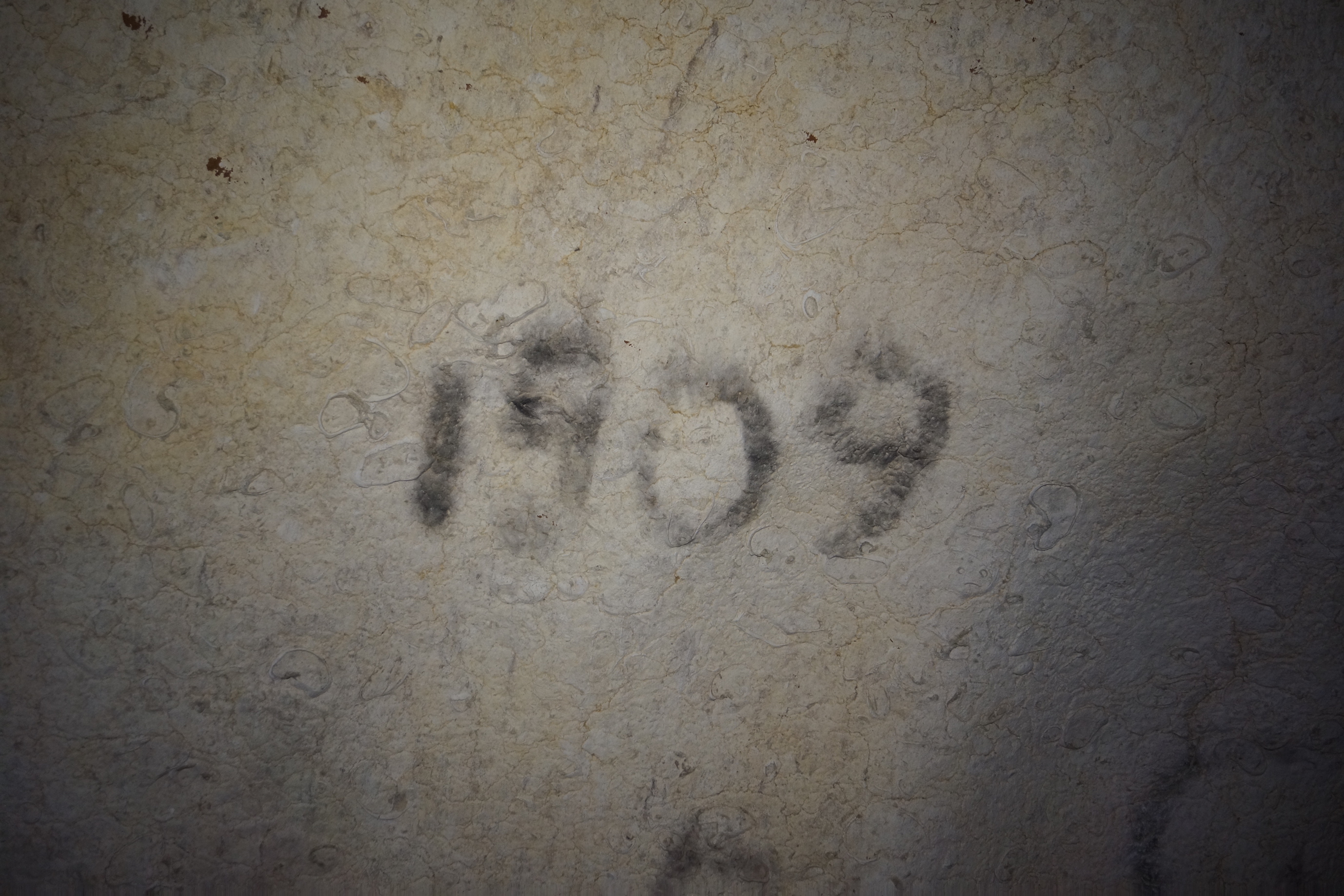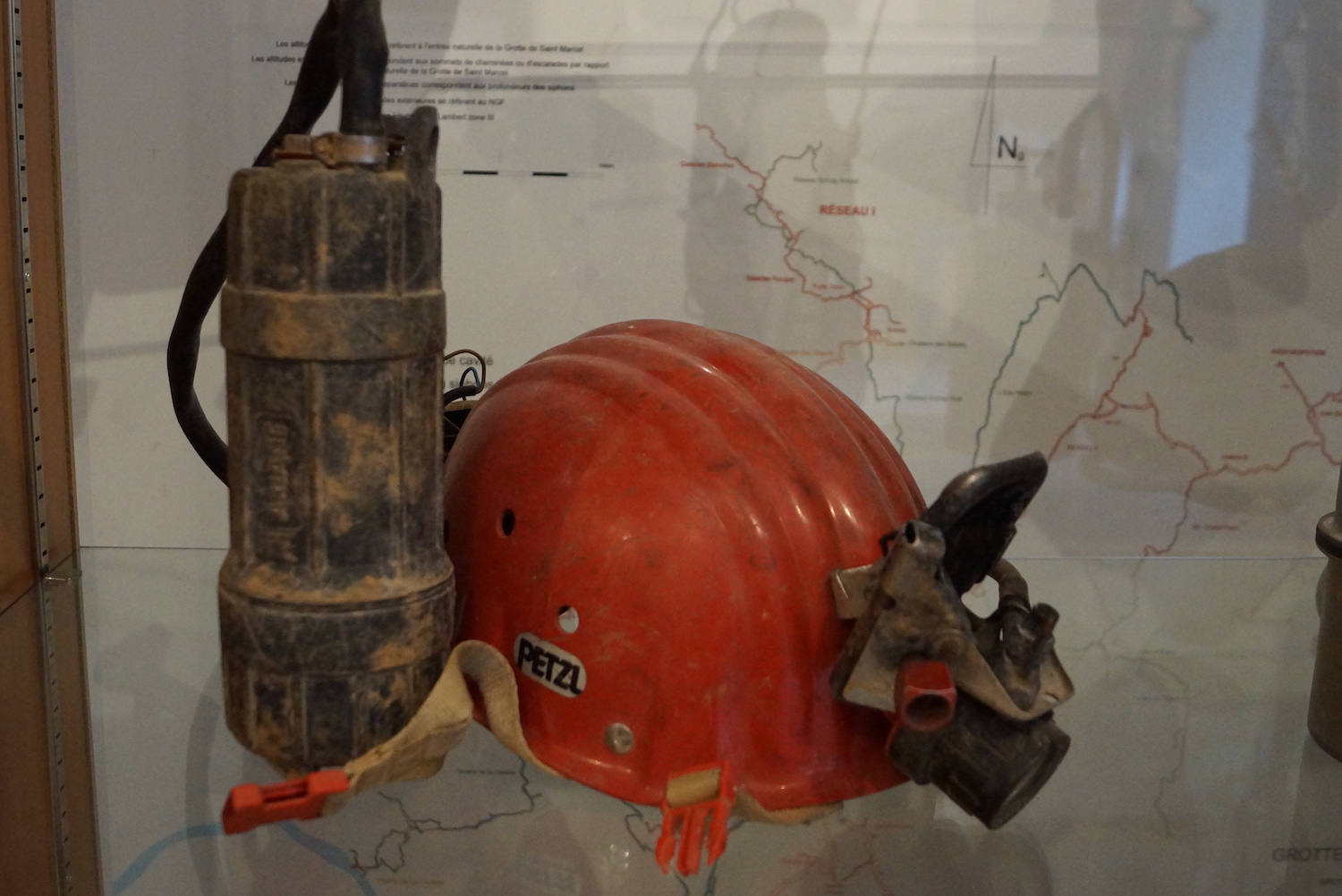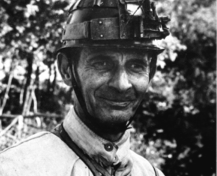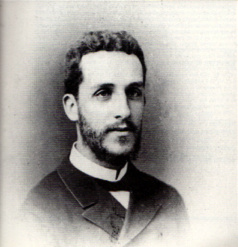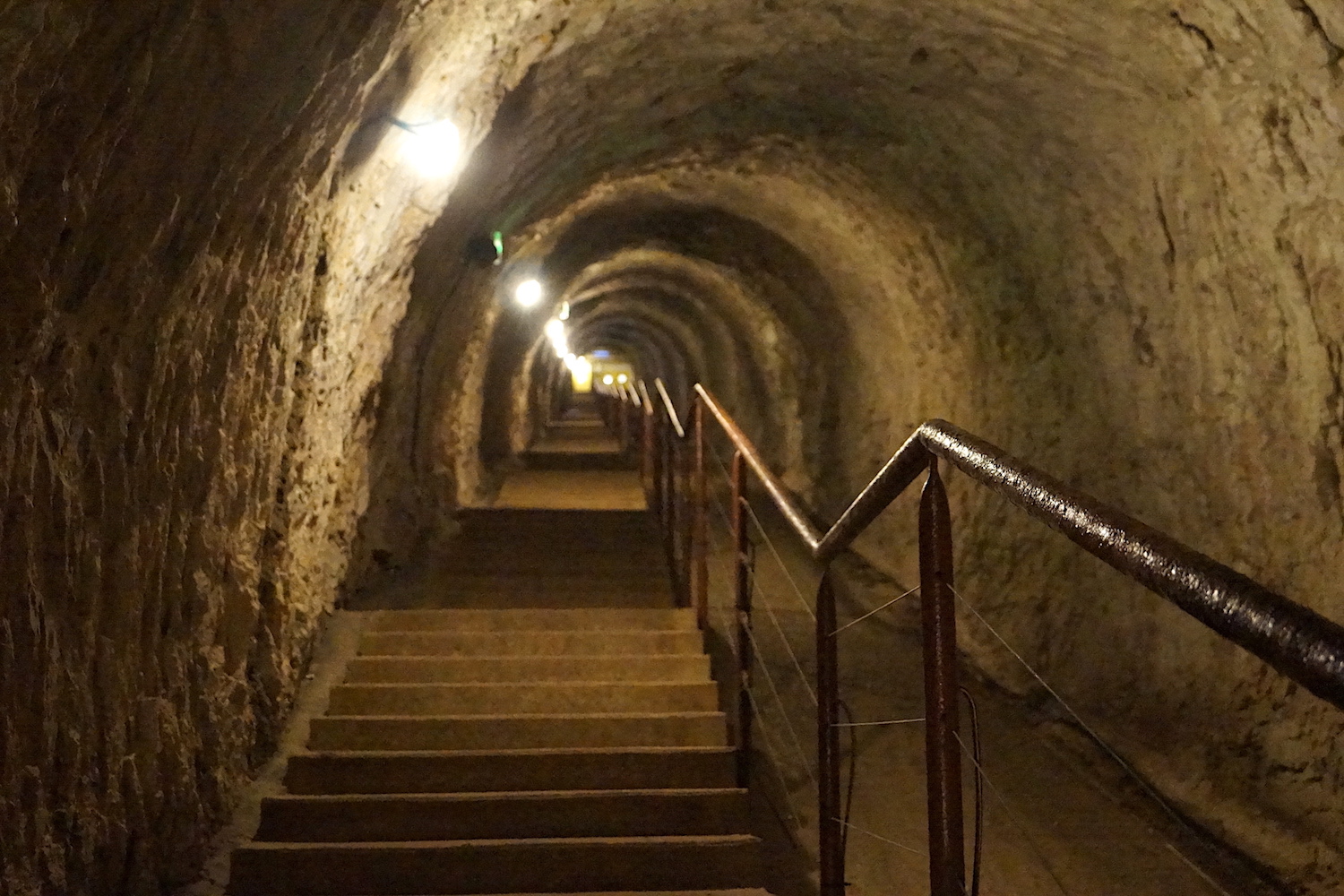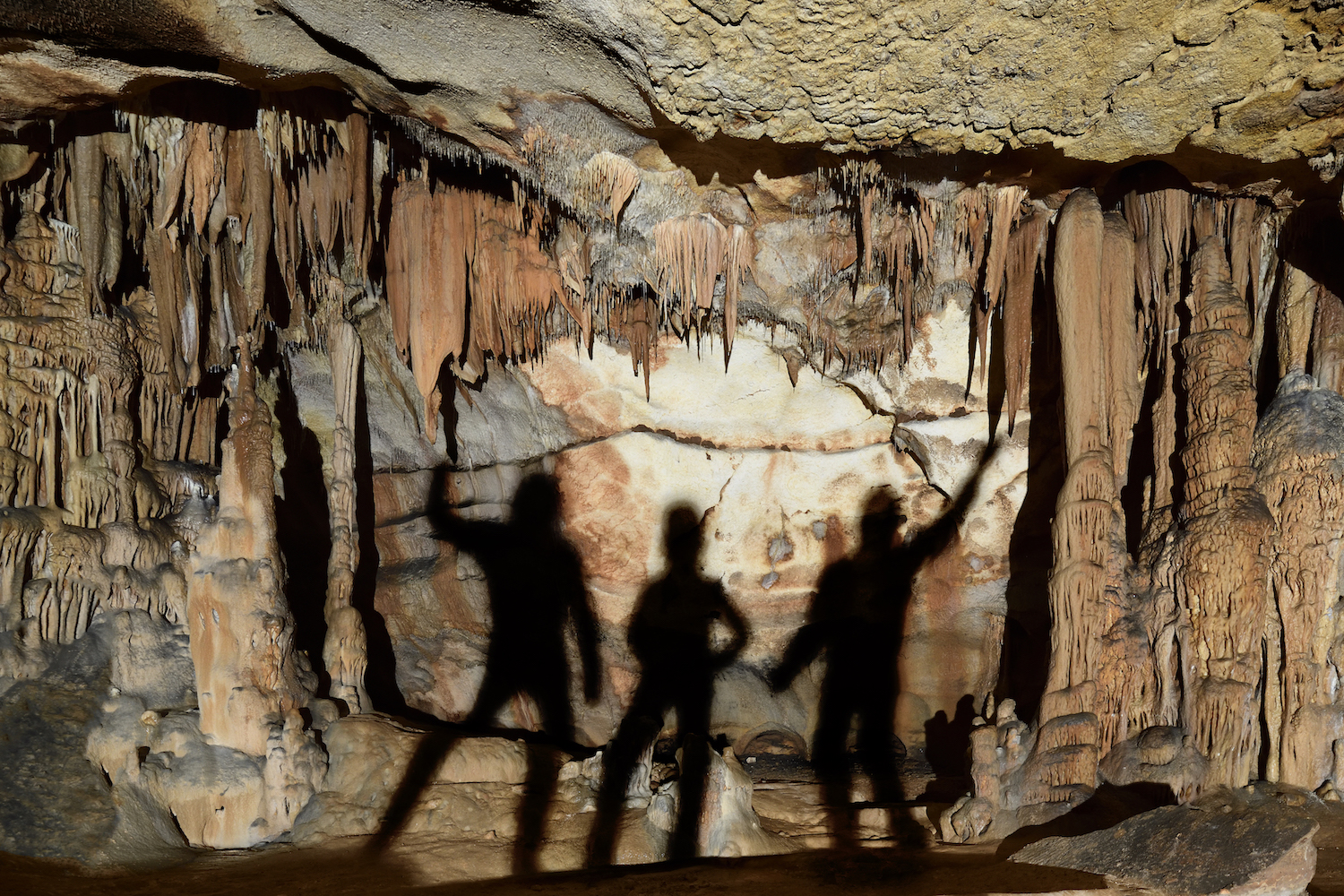Its History
Presentation
Did you know ? Following a donation made by Dona Vierna in 1228, the village of Saint Marcel became the proud owner of Grotte Saint Marcel, one of the gems of the underground world, designated national nature site since 1934
In times past it was known as Grotte du Grand Louret and explored by Léopold Ciron from Saint Marcel, who played a pioneering role in the field of Prehistory both in Ardèche and France. It was occupied at various dates by prehistoric man especially between 90 000BP and 1 000 BC.
The Lion’s Head cavity (closed to the public) hosts a 21,000-year-old rock painting of great beauty discovered in 1963. It depicts a bovid drawn in red ochre surmounted by a dotted crownlike feature and two deer heads. This painting was the first one to be dated thanks to the presence of charcoal from the torches used by its artist.
The Lion’s Head cavity (closed to the public) hosts a 21,000-year-old rock painting of great beauty discovered in 1963. It depicts a bovid drawn in red ochre surmounted by a dotted crownlike feature and two deer heads. This painting was the first one to be dated thanks to the presence of charcoal from the torches used by its artist.
World-renowned Grotte Saint Marcel has a very long history.
The first traces of human occupation of the natural entrance porch date back to the Musterian (Lower Paleolithic) period. We know Neandertal man skinned game and fashioned his tools there almost 40,000 years ago from the bones of herbivores found lying around. After the Musterian period, Saint Marcel cave was abandoned by Man. At any rate, the excavations made by René Gilles in 1971 did not bring to light any traces of occupation during the entire Upper Paleolithic period. However, later excavations have revealed several phases of occupation between the early or cardial Neolithic period and the Bronze Age. Farmers of that time set up an animal pen inside the cave ; they also erected a standing stone and a dolmen nearby. It would seem that the cave also served as a grainstore since barley and wheat grain have been found in the Upper Neolithic strata. After the Bronze Age, man no longer occupied the cave, probably because the entrance became blocked up.
The first traces of human occupation of the natural entrance porch date back to the Musterian (Lower Paleolithic) period. We know Neandertal man skinned game and fashioned his tools there almost 40,000 years ago from the bones of herbivores found lying around. After the Musterian period, Saint Marcel cave was abandoned by Man. At any rate, the excavations made by René Gilles in 1971 did not bring to light any traces of occupation during the entire Upper Paleolithic period. However, later excavations have revealed several phases of occupation between the early or cardial Neolithic period and the Bronze Age. Farmers of that time set up an animal pen inside the cave ; they also erected a standing stone and a dolmen nearby. It would seem that the cave also served as a grainstore since barley and wheat grain have been found in the Upper Neolithic strata. After the Bronze Age, man no longer occupied the cave, probably because the entrance became blocked up.
Closer to our era, in October 1836, a huntsman from Aiguèze followed the trail of blood left by a rabbit he had shot and ventured into the cave. It wasn’t until July 1838 that he returned to explore the cavity with friends and torches. Back home in Aiguèze, he described the immense size of the cave and its wealth of concretions. Between 1838 and 1870 it was known successively as Grottes du Bois Cayrelenc, Grottes de Saint-Martin d’Ardèche then Grottes des Pendants de l’Ardèche.
In order to end pillage and to protect the cave, the mayor of the day, Marquis of Bernis, decided to issue a decree in October 1838 allowing 2 visits per week. These visits were conducted by a certified municipal guide under strict conditions : no bags, no torches or flares, a maximum of 6 visitors per visit and accompanying boatmen or coachdrivers were not allowed in.
In order to end pillage and to protect the cave, the mayor of the day, Marquis of Bernis, decided to issue a decree in October 1838 allowing 2 visits per week. These visits were conducted by a certified municipal guide under strict conditions : no bags, no torches or flares, a maximum of 6 visitors per visit and accompanying boatmen or coachdrivers were not allowed in.
As from the late 1870s - early 1880s, the cave came to be known as Grottes de Saint Marcel and, after a brief period when tourist visits were put on hold, it was reopened in 1882. Extensive work was undertaken to improve access to the cave for visitors and strict rules were imposed following observations made by Alban Mazon and E A Martel.
World War I put an end to tourist activity and it wasn’t until 1920 that it reopened. On 26 June 1934, Grottes de Saint Marcel were listed amongst « the natural sites and monuments having important historical, scientific, legendary or scenic characteristics ». Its management was entrusted to the Syndicat d’Initiative de St-Marcel et de la Basse Ardèche (precursor of the Tourist Office) on 1 January 1935 for a fee of 1 franc per visitor. Significant investment was envisaged in order to modernise its management but the financial crisis then World War II put an end to that.
Robert de Joly undertook further exploration of the network in the early 1930s. He broke through beyond the Great Barrier where earlier expeditions of network 1 had ended. During the postwar period, the French military authorities were on the lookout for suitable sites to use as fallout shelters and Robert de Joly suggested that Saint Marcel’s network might fit their requirements. Under his supervision, the barrier was blasted out of the way, thus revealing new galleries and extending access to 3,260 metres. The military project was abandoned.
World War I put an end to tourist activity and it wasn’t until 1920 that it reopened. On 26 June 1934, Grottes de Saint Marcel were listed amongst « the natural sites and monuments having important historical, scientific, legendary or scenic characteristics ». Its management was entrusted to the Syndicat d’Initiative de St-Marcel et de la Basse Ardèche (precursor of the Tourist Office) on 1 January 1935 for a fee of 1 franc per visitor. Significant investment was envisaged in order to modernise its management but the financial crisis then World War II put an end to that.
Robert de Joly undertook further exploration of the network in the early 1930s. He broke through beyond the Great Barrier where earlier expeditions of network 1 had ended. During the postwar period, the French military authorities were on the lookout for suitable sites to use as fallout shelters and Robert de Joly suggested that Saint Marcel’s network might fit their requirements. Under his supervision, the barrier was blasted out of the way, thus revealing new galleries and extending access to 3,260 metres. The military project was abandoned.
With the advent of mass tourism, the construction of a pontoon on the Ardèche river between Sauze and the caves, then the Tourist Route through the Gorges in 1962 provided easier access to the caves. The shelter was made into a cafe cum restaurant run by Jean « Bouboule » Bernoux in 1964. In 1966 a cave exploration club was founded and in 1967, the former forester’s lodge was rented out to the St Etienne Forez caving enthusiasts group.
In the 1980s, Saint Marcel village council under the leadership of mayor Pierre Sabatier took determined steps towards opening the caves to the public. Extensive work was undertaken : a 122-meter long gallery was excavated, Sound and Light shows installed, the natural entrance porch blocked up and areas of archeological interest were protected.
In the 1980s, Saint Marcel village council under the leadership of mayor Pierre Sabatier took determined steps towards opening the caves to the public. Extensive work was undertaken : a 122-meter long gallery was excavated, Sound and Light shows installed, the natural entrance porch blocked up and areas of archeological interest were protected.
The cave was officially re-opened to the public from 27 May 1989. Its 19,500 annual visitors could then explore the newly-laid out areas between mid-March and mid-November. Communication and the direct management of the caves became a major activity for the village, as did regular investment. Each succeeding council took care to modernise the site in order to develop local tourism without ever neglecting its protection, located as it is in the heart of the Ardèche Gorges Nature Reserve. Since 2012, the caves have lost their plural « s » and are now known as « Grotte Saint Marcel ».
Today, more than 60,000 visitors flock here between April and November and over 62 km of galleries, both dry and flooded, have been mapped out.
Today, more than 60,000 visitors flock here between April and November and over 62 km of galleries, both dry and flooded, have been mapped out.

